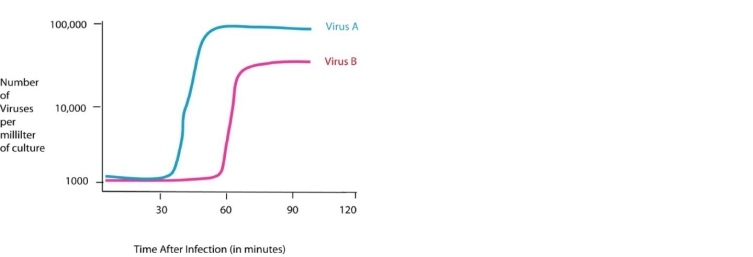Course
Biology Science
Study Pack
Set 33 Viruses
Question 1
(Multiple Choice)
Free
 Figure 33.1
Figure 33.1-Cells were infected with approximately 1000 copies of either virus A or virus B at the 0 time point. At 5- minute intervals, a sample of the virus and cell mixture was removed. The intact cells were removed from the sample, and the number of viruses per milliliter of culture was determined.
Using the data in Figure 33.1, how long does it take for virus A to go through one lytic cycle?
A) 30 minutes
B) 90 minutes
C) 45 minutes
D) 15 minutes
Answer
Question 2
(Multiple Choice)
Free
When people die from HIV infections, it is usually because they
A) divert too much energy toward replicating the virus.
B) have too many T cells, and this overwhelms their immune systems.
C) have too many HIV particles in their lymphatic system, which causes it to shut down.
D) have too few T cells to adequately fight infection.
Answer
Question 3
(Multiple Choice)
Free
What is a significant difference between lytic and lysogenic viral growth?
A) In lysogenic growth, there is a continuous release of mature viral particles throughout the infection.
B) In lysogenic growth, the viral genome gets incorporated into the host genome.
C) In lytic growth, the host cells are not destroyed.
D) In lytic growth, there are no mature viruses produced.
Answer